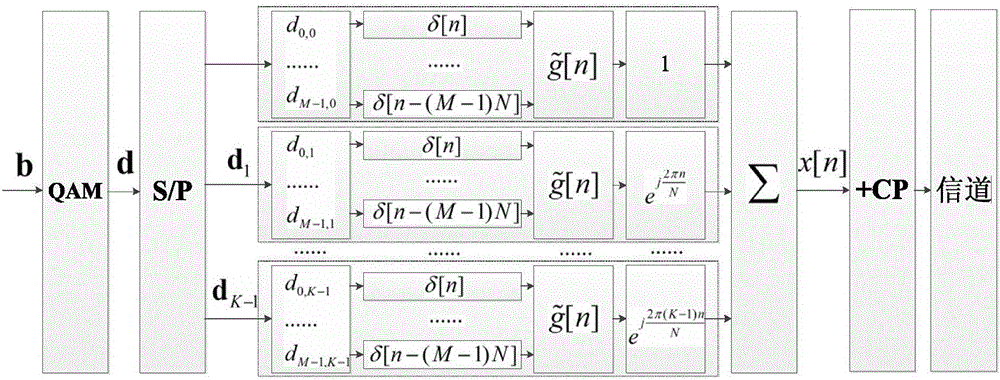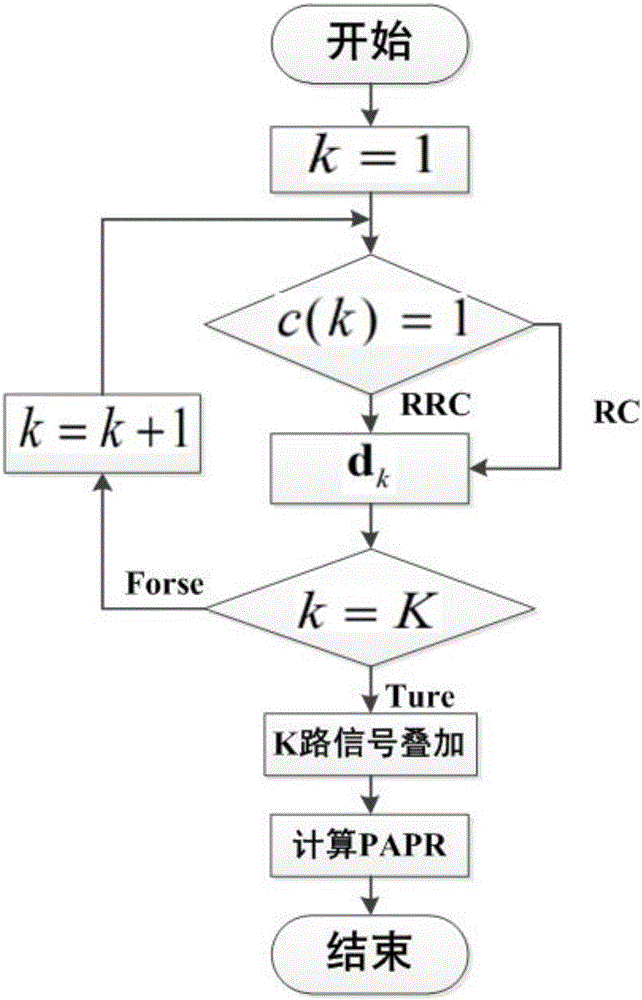Algorithm for reducing PAPR (Peak to Average Power Ratio) in GFDM system on basis of random filter allocation
A filter and algorithm technology, applied in the transmission system, multi-frequency code system, digital transmission system, etc., can solve the problems of complex computation, increased computation, and unsatisfactory results
- Summary
- Abstract
- Description
- Claims
- Application Information
AI Technical Summary
Problems solved by technology
Method used
Image
Examples
Embodiment Construction
[0066] The technical solutions in the embodiments of the present invention will be described clearly and in detail below with reference to the drawings in the embodiments of the present invention. The described embodiments are only some of the embodiments of the invention.
[0067] Technical scheme of the present invention is as follows:
[0068] This paper chooses two common and effective raised cosine filters (RC) and root raised cosine filters (RRC), so that they can be shared with other modules during system implementation. Specific steps are as follows:
[0069] (1) First, randomly generate a binary sequence C containing K elements k ∈{0,1}, k∈[0,K-1].
[0070] (2) Next, number the filter, when C k =1, the RCC filter is selected to filter the k-th sub-carrier signal, otherwise the RC filter is selected to filter the k-th sub-carrier signal.
[0071] (3) Finally, the K-way carriers are superimposed to obtain the GFDM signal, and the PAPR is calculated.
[0072] Next,...
PUM
 Login to View More
Login to View More Abstract
Description
Claims
Application Information
 Login to View More
Login to View More - R&D
- Intellectual Property
- Life Sciences
- Materials
- Tech Scout
- Unparalleled Data Quality
- Higher Quality Content
- 60% Fewer Hallucinations
Browse by: Latest US Patents, China's latest patents, Technical Efficacy Thesaurus, Application Domain, Technology Topic, Popular Technical Reports.
© 2025 PatSnap. All rights reserved.Legal|Privacy policy|Modern Slavery Act Transparency Statement|Sitemap|About US| Contact US: help@patsnap.com



